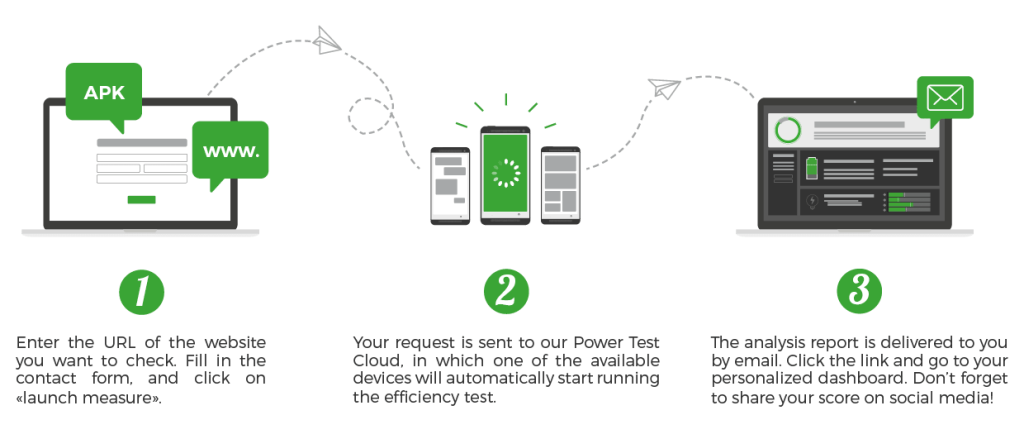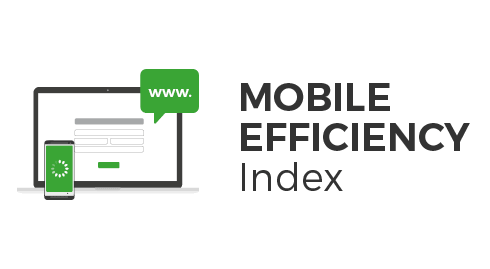Mobile Efficiency Index is the first online tool allowing you to measure the energy consumption of a website or an application on a real mobile device.

Accessible to all and completely free, this tool enables the internet user to type the URL address of a website and assess both the website efficiency and its impact on battery life. It also identifies the associated risks for the user (dissatisfaction, loss of users…).
How does the Mobile Efficiency Index work ?

The energy consumption of your website is measured on real smartphones located in our data center. Our algorithms allow to analyze the consumption in different stages: website loading, idle, page scroll, application in the background… many stages that impact the mobile’s battery life of the user. After this step, you will then get an efficiency index between 0 and 100. The smaller the score, the bigger the risk of user dissatisfaction – and thus, a loss of user and a decrease in ranking. This service is based on our Power Test Cloud service. The Power Test Cloud allows to easily program a scenario of standardized or automated tests for your Internet site or Android application.
We don’t perform any instrumentation of your code, there is no impact on production and we have a fully transparent measurement process. Regarding data, we require your email address so we can send you a report with data (that you decide whether or not to share on social media) and we do not stock any information besides energy measures.
A self-assessment tool to care about battery life
The battery life of a smartphone is one of the key criteria when deciding on a new mobile to purchase users say. “Low battery anxiety” has become a major source of stress amongst a part of the population. For the users, this need in battery life also became a criteria for application appreciation. If users are still okay with applications – such as games – draining their battery, they don’t understand that a standard website or application does the same. This observation is even more obvious in mobile users, when Android or IOs platforms notify the user of the overconsumption. In that case, the user won’t hesitate and will uninstall the application or will stop visiting the website.
When it comes to the application designers, risks are doubled: a loss in users, which also means a loss in revenues and a tarnished image (for instance via low scores from users on app stores). Google describes really well the scenario experienced by Busun – who went from a rating of 4.1 to 4.5 by improving performance.
To add up to this phenomenon, energy consumption is now a criteria taken into account in “stores” for ASO (App Store Optimization) and SEO (Search Engine Optimization) ranking and there is a growing awareness around user demand for more ethical choices (as evidenced by the Fairphone‘s success).
Obviously, these are the practical and economical aspects that focus the company individual interest in order to work on the efficiency of those digital services in mobility. Nonetheless, on a global scale, stakes are rather important. Decreasing the Digital power consumption and specifically extending batteries lifespan would contribute to significantly reduce the environmental footprint of the Digital world.
It has become urgent for application designers and/or owners to assess their applications, which is the starting point to implement actions and improve. Greenspector makes this self-assessment possible with its new free tool in beta version: the Mobile Efficiency Index.

